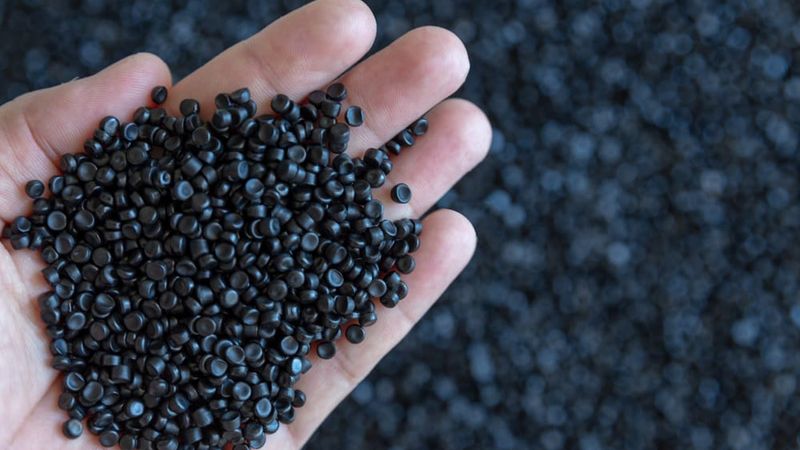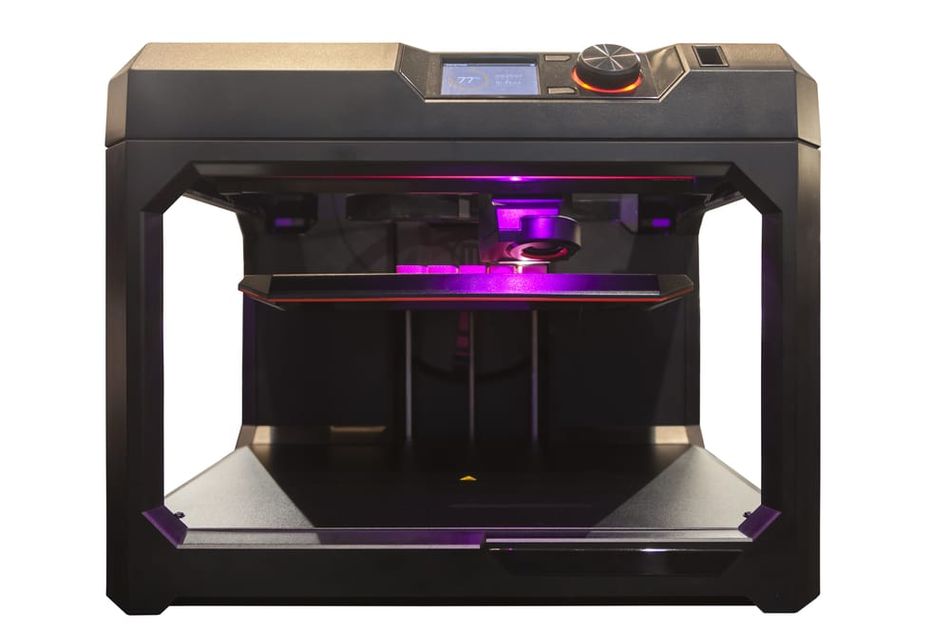HDPE 3D printing: applications, advantages, alternatives
HDPE can be found in objects like plastic bottles, garden chairs, and piping. But just how useful is HDPE filament for FDM 3D printing?

HDPE is a challenging material to print
You might not be offered a plastic bag at a grocery store these days, but the demand for HDPE — a ubiquitous packaging material around the world — continues to grow.
According to a recent report, 54.7 million tons of HDPE were produced in 2021, a figure expected to rise to 78 million tons by 2028.[1] Cheap, corrosion-resistant, and durable, HDPE is used in everything from plastic bottles to house wrap sheeting to piping. You’ll also find it in items like toys and garden chairs.
Some of the most widespread uses of HDPE are served by production processes like extrusion welding (sheeting), die extrusion (piping), and blow molding (bottles and containers). However, it is also possible to 3D print the plastic using HDPE filament. This article goes over the basics of HDPE 3D printing, including its best uses and its pros and cons.
What is HDPE filament?
HDPE (high-density polyethylene) is a thermoplastic polymer made from ethylene. HDPE is strong, corrosion-resistant, and recyclable, making it the material of choices for things like soda and detergent bottles — water bottles tend to be made from PET — and garden furniture.
It is possible to extrude HDPE pellets into 3D printer filament for additive manufacturing. HDPE filament, suitable for fused deposition modeling (FDM/FFF) has an excellent strength-to-weight ratio and is resistant to moisture and many solvents. It is also non-toxic, food-safe, and shatterproof, tending to rip or tear during malfunction rather than shatter. This desirable mechanical property makes it suitable for children’s products like toys and bottles.
That being said, HDPE is far from a common 3D printing material. In fact, few material manufacturers develop HDPE filament due to its poor printability. The material requires a high extruder and bed temperature and can undergo extreme warping; many users find that its benefits do not justify the difficulty of printing it.
Certain other types of polyethylene are more common than HDPE in 3D printing, the most significant being PETG, a modified form of polyethylene terephthalate.

How can you use HDPE in 3D printing?
HDPE is not a beginner-friendly 3D printing filament by any means, but it provides significant benefits when used correctly. It also has a fairly low cost, though not as low as PLA and ABS.
Printing tips
To print HDPE, a 3D printer with a heated bed and high-temperature extruder is required. Suitable nozzle temperatures can be found in the range of 230–260 °C, similar to some nylon filaments but higher than materials like PLA, ABS, and PETG.
The print bed also needs a higher temperature than for other materials, with a value in the range of 100–130 °C producing best results. HDPE shrinks aggressively as it cools, but the heated bed can help to mitigate this shrinkage. An enclosed chamber also makes a big difference when trying to combat shrinkage and warpage during printing.
A slow printing speed of around 20 mm/s minimizes the chances of print failure.
HDPE does not provide the best bed adhesion, so it helps to print rafts and brims below the printed part to ensure a good connection with the build surface. And although HDPE does not stick particularly well to itself, it does adhere to polypropylene (PP). Covering your build surface with PP packing tape can therefore greatly improve bed adhesion.
A cooling fan may be used, although the poor inter-layer adhesion of HDPE means this could be detrimental to the success of the part.
Applications
3D printed HDPE is suitable for a variety of prototyping applications, as well as final parts. Some common applications include the following:
Piping and plumbing components
In HDPE production generally, one of the most widespread applications is HDPE piping. However, this is generally produced using a die extrusion process, not additive manufacturing.
That being said, the exceptional water resistance of 3D printed HDPE makes the material suitable for plumbing components such as brackets and valves. It can also be used to fabricate smaller sections of piping — to replace missing or damaged sections, for example.
Food containers and components
As long as the 3D printer itself is clean and contains no residue from other materials, 3D printed HDPE is non-toxic. It is therefore suitable for 3D printed containers and other components for food storage or production.
While food containers are typically molded at a very low cost, 3D printing may be preferred for customized parts, such as cookware, plates, or cups with an embossed brand logo. Another application of this food-safe material is novelty cake decorations.
Toys and models
Because it is lightweight, strong, and shatterproof, as well as being non-toxic, HDPE is a suitable material for toys and other products for children. However, a more printable alternative that meets most of the criteria in this category is ABS.
Medical device components
Because of its non-toxicity, HDPE is approved by the FDA for use in medical components such as fittings, brackets, surgical instrument handles, and more. Watertight containers are also widely used in healthcare and may be 3D printed to provide custom forms.
Advantages and disadvantages
Advantages of HDPE | Disadvantages of HDPE |
Good material properties like strength, corrosion resistance, and non-toxicity | Exceptionally difficult to print, being susceptible to warpage and shrinkage |
Approved by the FDA for medical use | Poor interlayer adhesion and adhesion to build surfaces, making it vulnerable to part failure[2] |
Tears rather than shatters at moment of failure, making it fairly safe | Hard to source, with just a handful of filament manufacturers making it |
Can be easily recycled, which is particularly helpful when using a filament extruder, as failed prints can be turned back into usable filament | Benefits not significant enough to justify its use over comparable materials like PETG and PP |
Relatively affordable despite its scarcity |

Extruding your own HDPE filament
Because few manufacturers make HDPE filament, some DIY 3D printer users choose to extrude their own filament using a machine like a Filastruder. There are pros and cons to this approach. On the one hand, it is possible to make filament from scrap such as cut-up pieces of plastic bottles and milk cartons. On the other, filament extruders have a high up-front cost which is only justified if the buyer makes frequent use of it.
A mixture of virgin and recycled HDPE tends to produce usable extruded filament. That means using at least a small amount of preformed pellets, which cost a few dollars per kilogram. The recycled HDPE — from shampoo bottles, for example — needs to be thoroughly cleaned, then cut or shredded into small pieces measuring no more than 5 mm in any direction.
Another benefit of extruding HDPE filament is that failed HDPE prints can be cut into small pieces and recycled into new filament. Given how challenging it is to successfully print the plastic, you might find yourself with a fair number of failed prints to make use of.
What are the alternatives?
Users of the FDM printing process generally only use HDPE filament if absolutely necessary: when testing the material or attempting to adhere to a predefined bill of materials, for example.
Fortunately, there are a few alternatives to HDPE that offer a broadly similar range of material characteristics — low weight, water resistance, non-toxicity — without the inherent difficulties of printing HDPE.
Here we look at HDPE blends that incorporate elements of more printable thermoplastics, as well as different materials that can be substituted in for HDPE.
Blends
Blends are filaments that have been extruded from a mixture of two or more types of thermoplastic pellet. A possible HDPE blend is ABS-HDPE, with the two materials having a similar melting point.
Researchers testing the feasibility of an ABS-HDPE blend found that “although ABS and HDPE are immiscible, they homogeneously distribute themselves across the material.” They also found that a 50–50 blend of the two thermoplastics produced a material with superior printability and tensile strength to pure HDPE.
PETG
HDPE and PETG have a similar density and strength-to-weight ratio and have similar uses in manufacturing, with both regularly used to produce plastic bottles.
PETG is far easier to print than HDPE and is produced in large quantities by a wide variety of manufacturers. Although it can suffer from oozing and stringing issues, it is one of the most popular entry-level FDM materials due to its strength and price. Like HDPE, it is also non-toxic and recyclable.
PETG requires a similar printing temperature to HDPE, around 220–260 °C.
Recommended reading: PETG print settings: adjusting temperature, speed & retraction to improve printing
PP
Another alternative to HDPE is PP (polypropylene) filament. Like HDPE, PP filament is lightweight, strong, and water-resistant, so may be suitable as a replacement for HDPE plumbing components and piping.
Unlike PETG, PP suffers from the same printability issues as HDPE: it is prone to warpage and shrinkage during printing, though to a less extreme degree.
PP has a lower printing temperature than HDPE, working well in the range of 210–230 °C.
Resins
If the hardware is available, it may be possible to use a vat photopolymerization printer (SLA, DLP, etc.) to print a liquid resin with HDPE-like properties. Printable resins have different formulations according to the manufacturer’s specifications, but are often described in terms of their functional similarities to common thermoplastics.
HDPE-like resins on the market include 3Dresyn HDPE-like from Spanish company 3Dresyns and Durable Resin from Formlabs. Such resins imitate certain aspects of HDPE, such as its bendability and resistance to shattering. However, they are not safe for food or medical applications and are typically only used for prototyping.
Key takeaways
It is possible to 3D print HDPE filament. However, the material is far from easy to print, hence its scarcity on the filament market. In the majority of circumstances, it makes sense to seek an alternative filament that is more resistant to shrinkage and warpage.
Those who are determined to print with HDPE should be prepared to experience failed or deformed prints, and may therefore seek to recycle their failed prints into new filament using a filament extruder, reducing material wastage. Although filament extruders cost at least a few hundred dollars — premium systems cost upward of a thousand — they can be used to turn scrap plastic into viable filament.
For companies looking to make 3D printed HDPE prototypes of parts that will eventually be molded, there are better solutions available: filaments like PETG can provide a rough approximation of HDPE parts, while a vat photopolymerization 3D printer can be used to print a durable resin that mimics the plastic. Formlabs specifically recommends its Durable Resin product for the prototyping of HDPE or PP parts.
Finally, those printing with HDPE filament should be prepared to experiment with their machine settings before landing on a successful configuration. An enclosed chamber, heated print bed, and PP-covered build surface can all help to minimize the problems of warpage and shrinkage.
References
[1] BlueWeave Consulting. High-Density Polyethylene (HDPE) Market- Global Industry Size, Share, Growth, Opportunity and Forecast, 2018-2028, [Internet]. 2022 [cited 2022 Nov 18]. Available from: https://www.blueweaveconsulting.com/report/high-density-polyethylene-hdpe-market/
[2] Schirmeister CG, Hees T, Licht EH, Mülhaupt R. 3D printing of high density polyethylene by fused filament fabrication. Additive Manufacturing. 2019 Aug 1;28:152-9.
